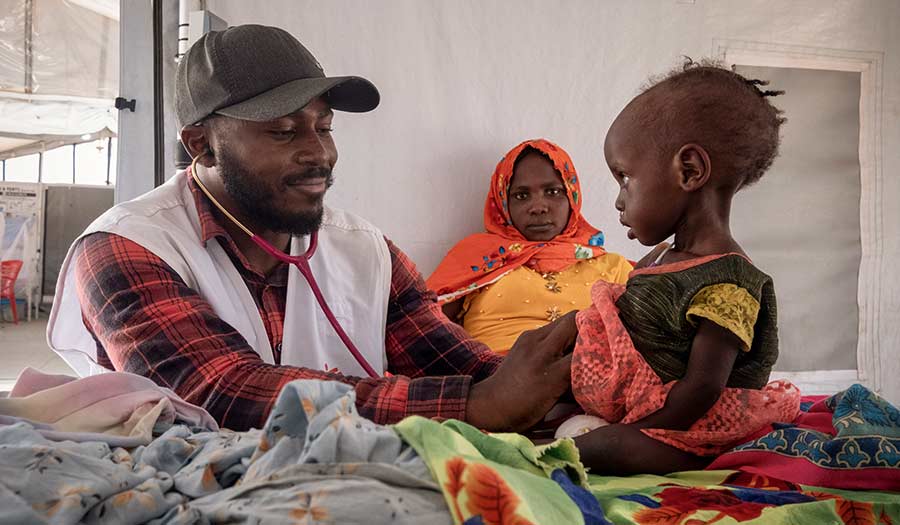 REUTERS/El Tayeb Siddig
REUTERS/El Tayeb Siddig
World News Desk
Learn the why behind the headlines.
Subscribe to the Real Truth for FREE news and analysis.
Subscribe NowROME (Reuters) – A goal to eliminate global hunger by 2030 looks increasingly impossible to achieve, with the number of people suffering chronic hunger barely changed over the past year, a United Nations report said on Wednesday.
The annual State of Food Security and Nutrition in the World report said around 733 million people faced hunger in 2023—one in 11 people globally and one in five in Africa—as conflict, economic crises and other issues take their toll.
David Laborde, director of the division within the UN Food and Agriculture Organization (FAO) which helps prepare the survey, said that although progress had been made in some regions, the situation had deteriorated at a global level.
“We are in a worse situation today than nine years ago when we launched this goal to eradicate hunger by 2030,” he told Reuters, saying challenges such as climate change and regional wars had grown more severe than envisaged even a decade ago.
If current trends continue, about 582 million people will be chronically undernourished at the end of the decade, half of them in Africa, the report warned.
A broader objective to ensure regular access to adequate food has also stalled over the past three years, with 29 percent of the global population, or 2.33 billion people, experiencing moderate or severe food insecurity in 2023.
Underscoring stark inequalities, some 71.5 percent of people in low-income countries could not afford a healthy diet last year, against 6.3 percent in high-income countries.
While famines are easy to spot, poor nutrition is more insidious but can nonetheless scar people for life, stunting both the physical and mental development of babies and children, and leaving adults more vulnerable to infections and illnesses.
Mr. Laborde said international aid linked to food security and nutrition amounted to $76 billion a year, or 0.07 percent of the world’s total annual economic output.
“I think we can do better to deliver this promise about living on a planet where no one is hungry,” he said.
Regional trends varied significantly, with hunger continuing to rise in Africa, where growing populations, myriad wars and climate upheaval weighed heavily. By contrast, Asia has seen little change and Latin America has improved.
“South America has very developed social protection programs that allows them to target interventions so they can effectively move out of hunger in a very fast way,” said FAO’s chief economist Maximo Torero.
“In the case of Africa, we have not observed that.”
The United Nations said the way the anti-hunger drive was financed had to change, with greater flexibility needed to ensure the countries most in need got help.
“We need to change how we do things to be better coordinated, to accept that not everyone should try to do everything but really be much more focused on what we are doing and where,” said Mr. Laborde.
The report is compiled by the Rome-based FAO, the UN’s International Fund for Agricultural Development, its Children’s Fund (UNICEF), the World Health Organization and World Food Programme.
- World News Desk
- AFRICA
 755,000 People at Risk of Famine in Coming Months in War-torn Sudan, Experts Warn
755,000 People at Risk of Famine in Coming Months in War-torn Sudan, Experts Warn


